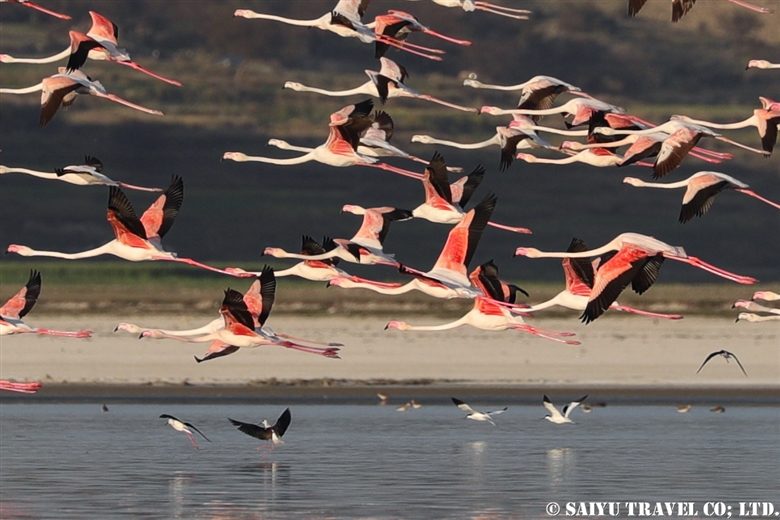
We visited Uchhali Lake located in Soon Valley, from Islamabad. The trip’s duration was 1 night and 2 days.
Blessed with the weather, we were able to observe the Greater Flamingos in the gorgeous evening golden light.

Northern Shoveler and Greater Flamingo.

Greater Flamingos flying on a sparkling golden lake’s surface.

Greater Flamingos on the lake’s shore.

Greater Flamingos taking off.

A flock of Greater flamingos flying above Uchhali Lake.

As soon as the sunset, the flamingos became a silhouette. We were so excited to photograph these birds until the dark. If you really want to capture the true beauty of flamingos, then the golden hour is the best time.
No doubt, it was a very lovely day at Uchhali Lake.
Photo & Text: Mariko SAWADA
Observation: end of March 2019, Uchhali Lake, Soon Valley, Punjab
Reference: Birds of Pakistan, Birds of the Indian Subcontinents (Helm Field Guides)
Tag : Pakistan Travel Blog , Pakistan Photography Tour , Soon Valley , Travel Pakistan Blog , Uchhali Lake , Indus Caravan , Bird watching in Pakistan , Birds of Pakistan , Saiyu Travel Pakistan , Greater Flamingo , Pakistan Travel company , Pakistan Blog , Pakistan tour operator






-WAGHA-FLAG-CEREMONY|西遊旅行-1200x675.jpeg)































